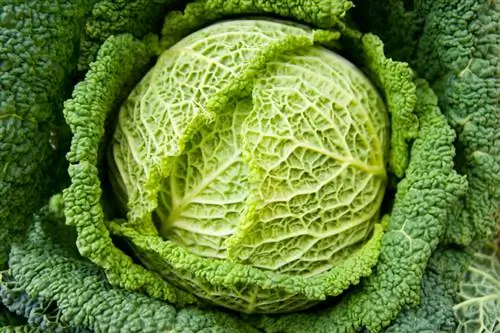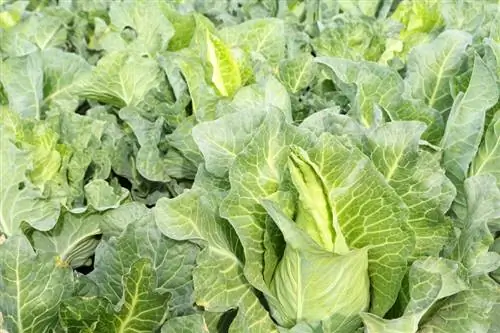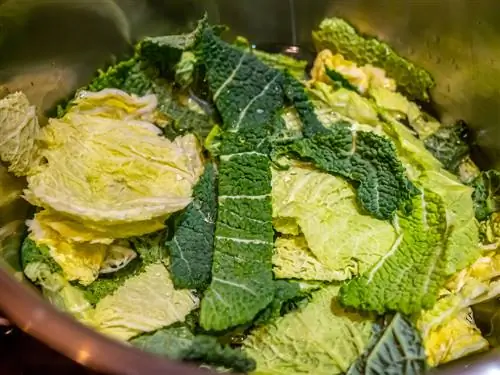- Author admin [email protected].
- Public 2023-12-16 16:46.
- Last modified 2025-01-23 11:19.
Vegetables - leafy vegetables, fresh from the garden, are very trendy in times of constant and consumer-unsettling debates about possible genetic manipulation of food. Those who own an allotment garden are increasingly happy to grow their own vegetables again - here they know what's in the plant.

How can you grow savoy cabbage successfully?
To grow savoy cabbage, pre-sow different varieties between March and May, plant them outdoors on calcareous soil (pH 6.5-7.5) from May onwards and fertilize them regularly with organic fertilizer. Pay attention to crop rotation and good previous crops such as potatoes, peas or beans.
Savoy cabbage, the most beautiful of the cabbages
A popular type of cabbage is the savoy cabbage, which is easily recognizable by its curly and wavy leaves. The vegetable, which is relatively young in terms of food history - it has only been cultivated in our gardens since the 18th century, while white cabbage and red cabbage have been on the menu since the 11th century - is a robust vegetable that can be harvested all year round. Gourmets appreciate its delicate leaves, which can be used in many different ways in the home kitchen. In addition, the eye eats with it, the leaves of the savoy cabbage have a very decorative effect. By the way, it can be eaten before it is fully ripe. Even if it doesn't have a firm head yet, it provides a good taste experience
Savoy cabbage grows outdoors from May
It makes sense for the hobby gardener to pay attention to different varieties when buying seeds so that they can enjoy savoy cabbage all year round. The different varieties enable earlier, later and medium cultivation. The seasons give the varieties their names. The gardeners distinguish between early, summer, autumn and winter savoy cabbage.
To grow on the windowsill or, if available, in the greenhouse (€219.00 on Amazon), it should be sown between March and May. From May onwards it can be released outdoors. The gardener should plant it on calcareous soil; the savoy cabbage likes pH values between 6.5 and 7.5. The savoy cabbage likes it clean and moist. Regular watering and chopping of the cabbage are essential for it to thrive. He also needs food: he rewards fertilizer applications with stronger growth.
Tips & Tricks
In order to increase the yield of savoy cabbage, it is worth using organic fertilizer when fertilizing. This allows the plant to grow even stronger. Maintaining crop rotation is important for gardening success. Savoy cabbage should only be grown again on the same area in the third year. Potatoes, peas or beans are considered favorable previous crops. If crop rotation is not adhered to, there is a risk of disease. Clubroot, which is caused by a slime mold, is considered the most dangerous disease. The fungal spores can survive in the soil for up to ten years. If the disease occurs, it should be combated as thoroughly as possible.
The gardener should wait three weeks after planting the savoy cabbage before fertilizing for the first time. As cabbage grows, it needs regular fertilizer. Experts recommend three to four doses.






